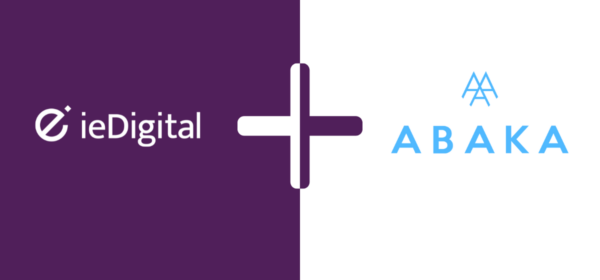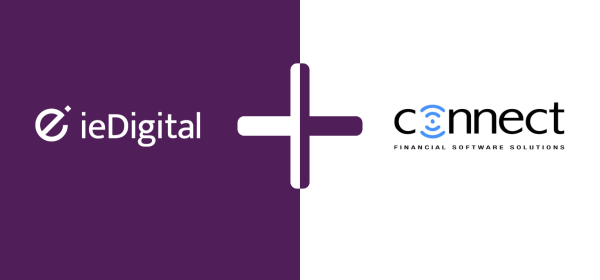Hardly a day goes by when we don’t reach out to Google, Apple, Facebook or Amazon (the GAFAs):
“Hey Alexa, what’s the weather doing today?”
“OK Google, what is my drive to work like?”
But there’s one area of our lives that these disruptive firms have yet to invade: our finances. While they are tinkering around the edges with everything from digital wallets to comparison engines, we’ve yet to see any of them become a fully fledged bank. However, news that Amazon is in discussion with JPMorgan Chase, and a number of other financial organizations, has the question many financial services executives have been wondering for some time: “Will any of the GAFAs ever become a bank?.”
Whether or not they actually become a bank, one thing is certain: the GAFAs will bring further disruption to financial services. Is your organization ready to fend off the threat and take advantage of the opportunities?
- 57% of retail bank IT directors believe GAFA will enter the retail banking sector within five years.
- 36% of consumers would consider switching to a GAFA bank; rising to 50% of those between aged 25 and 34.
- 41% think GAFAs would offer better technology.
- 40% think they would offer more innovative products and services.
(Source: Research from Peru Consulting.)
So, will a GAFA ever become a bank?
Key Points:
- For: They can leverage the open banking opportunity.
- Against: The local banking business model doesn’t suit them, and it has yet to be proven that consumers would trust them when it comes to financial services.
The banks you know today might disappear altogether over time. There are various views on how extreme [it would be] or how quickly that process might happen.
Many financial services executives are becoming concerned that the GAFAs could become their next big rival. A recent survey carried out by strategy consultancy Bain found that nearly 60% of bank customers were willing to try a financial product from tech groups they already use. Amazon and PayPal were the two brands consumers would most trust with their money, the survey found, ahead of Apple, Google, Microsoft, Facebook and Snapchat. Sharing that concern, Clydesdale and Yorkshire Banking Group chief executive, David Duffy, told BBC 5 Live’s Wake Up to Money podcast:
“Let’s examine the points for and against the GAFAs becoming banks:
YES
Well-known and omnipresent – The GAFAs have everything they need to play a leading role in the era of digital financial services:
- Billions of users around the world.
- A wealth of personal data about each of those individuals.
- Significant investment funds.
They have the technology – The report highlights three domains that are not only becoming critical to the competitive differentiation of financial institutions, but also where the GAFAs have far deeper experience than their financial services counterparts:
- Cloud computing.
- Customer-facing artificial intelligence.
- Big data customer analytics.
Large technology firms like Facebook, Amazon and Google are a bigger threat to banks than fintech startups. (World Economic Forum)
Open banking offers new opportunities – Open banking will bring significant changes to banking. It’s an immense opportunity for traditional banks and fintech startups, and any technology company able to make use of open APIs to access customers’ accounts – including the GAFAs. You don’t, however, need to become a bank to leverage open banking – you can disrupt purely as an AISP (account information service provider).
The global opportunity – Open banking’s global opportunity makes it more attractive to the GAFAs, who are global players themselves. While it’s easy to think, under the guise of PSD2, that open banking is a UK and European phenomena, there’s actually a lot happening internationally:
- Australia’s four major banks will enable open API access for customers by 2018, for instance.
- Customer-facing artificial intelligence.
- The Canadian government is actively exploring following the UK and EU, with Accenture research finding 63% of banks in North America believe implementing open banking is critical to competing with new entrants.
Established banks are lagging – The GAFAs have a great opportunity to get ahead. Many established brands are struggling to get to grips with the open banking opportunities; they’re simply not in the right place culturally to take advantage of the opportunity. Some financial institutions even failed to make the January deadline to implement open banking regulations: RBS, HSBC, Barclays, Santander, Bank of Ireland and Nationwide.
“Next time you need to send your friend a tenner, you’ll instant-message them the money, rather than opening up your boring bank app, fiddling about finding their bank details, authenticating yourself again, and finally firing off the cash. You’ll just type ‘+£10’ in your WhatsApp chat.” (Dave Birch, author, adviser and commentator on digital financial services)
NO
The business model doesn’t fit – The banking business model doesn’t fit well with the GAFAs’ global ambitions. Banking is very much a local business with heavy local regulation. Moreover, cultural differences mean banks must adapt to their local customers’ specific needs and expectations:
- In Australia, customers pay for their banking services.
- The UK has long struggled to move away from free banking.
“Technology companies do not move into banking territory to steal deposit accounts, which are highly regulated, need lots of capital, have high levels of governance and are incredibly complicated in terms of compliance and audit. Why would they? It’s not core and does little for their business. But technology titans have and will move further into areas that assist building digitally integrated social, commercial and financial lifestyles, and that starts with payments and credit.” (Chris Skinner, author of Digital Bank, ValueWeb and Digital Human)
GAFAs want traffic, not regulation – Google, for example, won’t launch a bank because of the costs and regulation, and because of the advertising revenue coming from its financial services clients.
Switching rates are too low – Low switching rates make the banking business model less attractive to the GAFAs. People are more likely to change their spouse than their bank! A 2013 Mintel survey found that, on average:
- Current-account relationships last 17 years.
- British marriages that end in divorce last just 11 years and six months.
The tech giants don’t have our trust – While the average person may be more likely to trust Google than a fintech startup, Tom Blomfield, founder of Monzo, doesn’t believe the GAFAs can ever achieve the same level of trust as established banks:
“None of the big techs are in the sweet spot of being the trusted confidant that manages your entire financial life. For any of the tech companies to get there is quite a big leap from their core mission.” (Tom Blomfield talking to Fintech Insider)
Moreover, a Harvard-Harris poll published in The Guardian agrees, that trust in the tech giants is waning on the back of concerns around the use of personal data, fake news and tax avoidance.
The GAFAs are already disrupting financial services
- The GAFAs are already disrupting financial services.
- There are other areas they could disrupt.
- Success has been mixed.
- The BATs are the leaders.
“Google, Amazon and Microsoft are hosting a rapidly rising portion of the world’s financial data at their cloud computing divisions.” (Financial Times)
The GAFAs are increasingly trying to leverage their technology and the data available to them to solve problems. Amazon, for instance, is extending trust outside its traditional value chain with Amazon Pay, and turning Alexa into a digital financial assistant. A logical next step would be to leverage a combination of product, consumer, and transactional financial data to deliver financial advice and tailored product information.
The GAFAs are already disrupting financial services and encroaching on traditional banking services:
- Google has been trying to crack digital payments since 2006 with Google Checkout, Google Wallet, Android Pay, and most recently Google Pay.
- Google already provides its own comparison at the top of any search results, disrupting comparison engines and financial services firms by taking comparison to a new level.
- Amazon has already pushed into loans to small businesses operating on its Marketplace platform, announcing in June 2017 that it had originated a total of $3bn since a low-key launch in 2011. It states that more than 20,000 small businesses in the US, UK and Japan participate, with more than half taking a second loan.
- Amazon already has its own UK credit card, the Amazon Platinum Mastercard, which gives reward points whenever users shop on it. (Behind the scenes, it’s run by ieDigital’s client, NewDay.)
- Facebook recently secured an electronic money licence in Ireland.
GAFAs also have the potential to disrupt:
- Data brokerage – A personal data bank and custodian broker for your health or financial data, with APIs allowing you to share and import/export your data.
- KYC digital ID services and customer credential tracking – Leveraging their leadership in protecting your credentials and their platforms.
- Money management – Leveraging advanced technology such as AI on consumer transaction data to offer tailored financial product recommendations.
- Financial advice – “Using mapping data from Google, iTunes information from Apple, social media content from Facebook and customer choices from Amazon, this vast customer insight could lead to highly personalized financial advice and solutions.” (Fintank)
But success has been mixed:
- Google shut down Google Compare in March 2016 after it didn’t deliver as expected. The advertising product served up suggestions for a range of financial products, including credit cards, mortgages and insurance.
- Google merged Google Wallet and Android Pay into Google Pay after its vision for the Google Wallet never materialized: a peer-to-peer payments service developing into a wallet holding everything from tickets and loyalty cards to your driving licence and more.
- Referring to lower than expected adoption of Apple Pay, Apple’s Tim Cook recently said: “Mobile payments have taken off slower than I personally would have thought if you asked me a few years ago.”
The business case for Amazon becoming a bank could rest on interchange fees alone. On average, they incur a 2% interchange fee for most card transactions. So getting customers to pay directly from an Amazon current account could (according to estimates by Bain & Co) save more than a quarter of a billion dollars in annual interchange fees in the US alone.
It isn’t the GAFAs you need to worry about, it’s the BATs
China’s most successful and influential companies are taking the lead: Baidu, Alibaba and Tencent (the BATs for short) have moved Chinese commerce from cash-heavy to cashless, according to Forrester’s Keep An Eye On Baidu, Alibaba, And Tencent report. Alibaba and Tencent, in particular, have become dominant operators in China’s $5.5tn payments industry.
- Alibaba’s Ant Financial launched MyBank, an online bank aimed at those who have limited access to existing banking systems and companies seeking financing, in June 2015.
- Tencent launched WeBank, which is closely integrated with the popular Chinese instant messaging app WeChat, in January 2015.
- Baidu – the “Google of China” – and partner CITIC Bank were given approval to launch a new joint banking operation in August 2017.
- Ant Financial is on the acquisition and expansion trail, investing directly in digital wallets such as India’s Paytm and South Korea’s Kakao Pay, and trying to buy MoneyGram for $1.2bn.
- Tencent is leveraging WeChat to expand its geographic coverage.
- Baidu and its partners’ ambitions go beyond payments, with Baixin Bank leveraging Baidu’s AI technology and big data, along with autonomous vehicle technology, to revolutionize the customer experience.
Now establishing themselves in the global financial services economy, the BATs are reaching out to consumers beyond China’s boundaries and are posing a threat to traditional financial firms as they do so. They appear to be much more ambitious and aggressive than the GAFAs. However, if the BATs are to make inroads beyond Asia, they will have to do so under the same onerous regulatory regimes that the GAFAs operate in.
The reality: cherry-picked OTT services
- The GAFAs can easily leverage their platforms to take advantage of the open banking opportunity.
- They don’t need to apply for a banking licence.
- Banks should leverage the GAFA technology themselves.
“Europe’s introduction this year of open banking regulation, which forces lenders to provide access to accounts of customers who authorize it, has left senior bankers worrying that tech groups will cherry-pick the best parts of their business.” (Financial Times)
The GAFAs don’t need to launch a bank
As David Duffy puts it: “The banks [face] the possible consequence of death by a thousand darts, where all the individual higher margin services are being taken out by these other providers.”
I don’t believe the GAFAs will obtain banking licences, because they simply don’t need to. They’re more likely to become a financial services hub, facilitating the relationship between the consumers and providers of financial services. They would become the disruptive middleman Forrester describes in Oliwia Berdak’s report Why Google Bank Won’t Happen, squeezing banks’ margins, reducing banks’ visibility of their customers, and weakening traditional banking brands.
The GAFAs will morph into a financial services hub by leveraging the platform economy that has revolutionized many markets in recent decades.
The platform economy
In their book, Platform Revolution, Parker, Van Alstyne and Choudary describe this ‘platform economy’ as an economy built on the technology platforms to enable two-sided markets. With security, regulation and consumer trust at their core, these platforms facilitate the creation and exchange of products, services and social currency in a way that ensures all participants capture value. The GAFAs will simply leverage their own technology platforms along with the access to the customer account that will become available to them as banks build their own ‘open’ platforms.
“The bank provides an open platform for sellers, buyers, and content providers to interact, create and sell products and services and share value.” (Accenture)
Built using API management software, next-generation core banking systems and digital banking platforms, these platforms allow banks to share assets such as data, algorithms and transactions (monetary and non- monetary) with business ecosystem participants such as employees, customers and partners. The GAFAs will leverage the notion of marketplace banking to offer the best ISAs, mortgages, loans, FX and so on, developed by different companies, yet manage and administer them on their platforms.
Leveraging the GAFAs
To succeed in the world dominated by the GAFAs, banks must move to the places where their customers spend their time: in the GAFAs’ apps. In 2017, the average adult spent two hours 25 minutes a day (19.9% of average daily total media time) using mobile apps, a jump of 10.3% over 2016. App usage is mainly concentrated within social networks, Google and utilitarian apps, such as maps and messaging.
Financial institutions will soon find themselves fully immersed in the apps their customers use the most: services such as WhatsApp, Amazon’s Alexa smart assistant, Facebook Messenger and Google Maps. It’s also no coincidence that Visa and Mastercard can usually be found at the large technology trade shows demonstrating commerce from a connected car.
- WeChat: Bank of China, China Construction Bank, and China Merchants Bank are just three of many banks that have deployed chatbots on WeChat.
- Alexa: Capital One customers can manage their accounts through Amazon’s voice-enabled chatbot.
- Facebook Messenger: Citibank’s natural-language chatbot called Citi Bot allows consumers to ask questions about their accounts, transactions and rewards.
Fighting back: What banks can learn from GAFAs
- Banks need to emulate the key attributes of GAFAs.
- They are already doing so in some areas.
The attributes of disrupters
Gartner’s Alistair Newton recently told delegates at its annual symposium that banks would do well to take note of the key attributes that set GAFAs apart as disrupters:
- Culture: They have high cultural maturity. Problem-centric throughout, they obsess about solutions to the problems customers are facing before the customer even considers them, rather than technology. Empathic and contextual, they search for data that enhances their understanding of the customer, then take an unconstrained vision across the entire customer landscape.
- Structure: Aligned to the needs of a digital customer base, they have the structural and operational flexibility that allows them to build a business vision and permeate from there. Alibaba, for instance, revisits its vision every quarter.
- Technology: They leverage the AI and analytics ingrained in their solutions to offer customers the ultimate experience.
- Talent: They tap into anthropologists, sociologists and psychologists to understand how their technology is used in the hands of customers. As data experts, they understand the value of data and have the toolsets to identify additional value, and to layer data together.
- Strategy/business model: Their platform businesses create and derive value from their business ecosystems. Their focus is not on profit, but about driving the traffic volumes that power their ecosystem.
Adapting these lessons to banking
First, financial institutions need to build an ecosystem and platform vision that focuses on business value over IT value as APIs become second nature. That vision should identify all ecosystem components and reimagine all parts of the business for the digital era, particularly HR and procurement, which will be central to enabling change.
Second, banks need to develop the cultural vision that’s so often overlooked in digital banking strategies. They need to take onboard the attributes of the disrupters threatening their market to be able to compete on a level playing field.
Third, banks need to monetize the vast volumes of data they hold. Changing data’s role is a significant shift for banks, and one they must address to thrive in a digital era where data is king.
Banks are already innovating
Platform banking:
- HSBC Connections Hub brings together a small business community to ask for help and match businesses.
- The Macquarie open platform is the simple acknowledgement that the data we have is not theirs, but the customer’s.
- BBVA is increasing the number of products available on its BBVA API Marketplace.
- Credit Agricole, N26 and Starling sell solutions created by business ecosystem partners.
Digital ID:
- Capital One has launched a Digital Identity API product.
Culture:
- Financial institutions are becoming less focused on sales, with NPS and engagement becoming increasingly important.
Recommendations
While the GAFAs are unlikely to morph into a true bank, you simply cannot ignore the threat they pose to the financial services space. I believe they will increasingly sit over the top of the financial services customer experience, diluting your brand, reducing the competitive advantage of your data and eating into select revenue streams.
Now is the time to turn that threat into an opportunity. Learn from the GAFAs to create new financial ecosystems built around platforms and APIs. Transform your business into one of the digital era’s great successes.
- Focus on understanding the GAFAs’ core capabilities rather than obsessing about the tech giants themselves.
- Urgently develop your ecosystem, platform, data and API visions.
- Leverage fintech companies to accelerate your functional capability, and bring AI, analytics and robotics into your day-to-day operations.
- Address any cultural impediments to change that exist, freeing your staff from the fear of failure.














